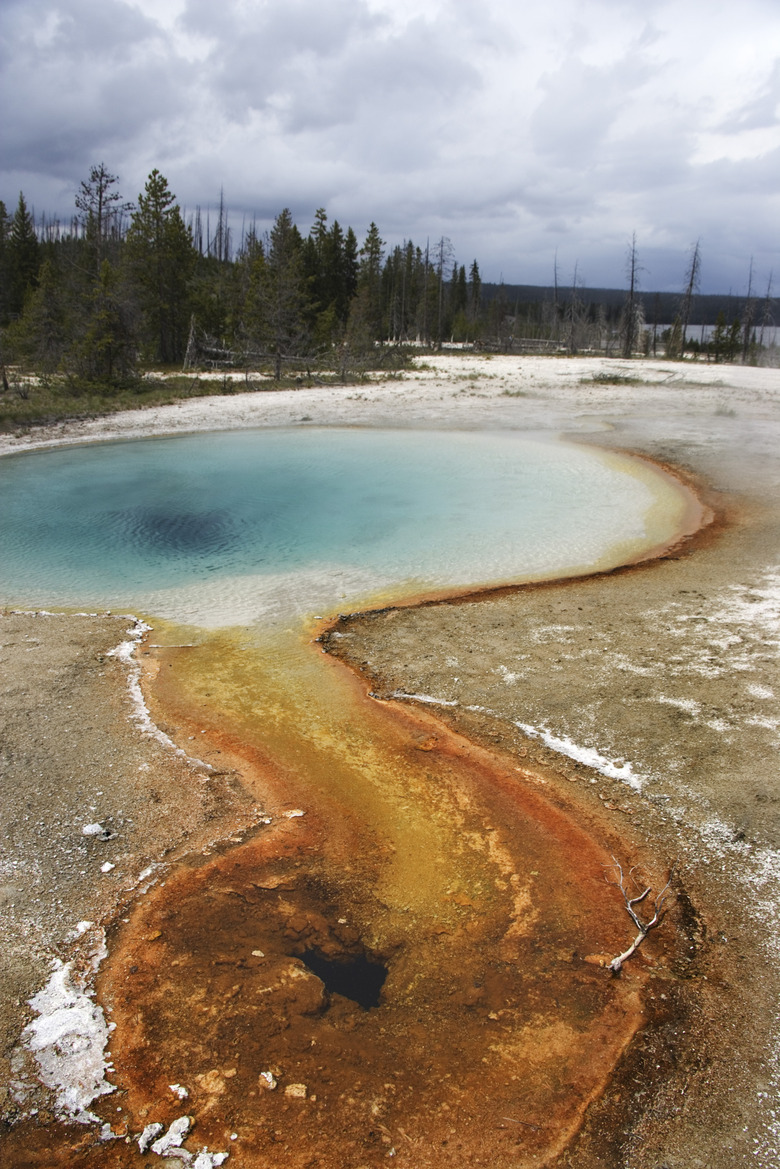Types Of Bacteria Living In Acidic pH
Organisms that live in environments that would harm or kill most things are called extremophiles. When that extreme environment has a very low pH, generally below three, they are known as acidophiles. Acidophilic bacteria live in a diversity of places, from vents at the bottom of the sea to thermal features in Yellowstone to the human stomach, and all have adaptations to help them survive under harsh, acidic conditions.
Helicobacter pylori
Helicobacter pylori
Helicobacter pylori is a species of bacteria that is found in the human stomach and is responsible for 80 to 90 percent of stomach ulcers (see reference 3). It is shaped like a screw with several flagella that help it move. The human stomach can have a pH as low as two, acidic enough to denature proteins, start digesting your food and kill most bacteria. Helicobacter pylori is acidophilic, but would prefer not to spend energy keeping itself safe from the harmful effects of acid, so it spends a lot of its time burrowed deep in stomach mucus. When it does need to move from place to place, it insulates itself with a protective bubble of buffering solution that neutralizes the acid.
Thiobacillus acidophilus
Thiobacillus acidophilus
Thiobacillus acidophilus is an example of a thermo-acidophile, meaning a bacterium that likes both extremely hot and extremely acidic environments. It is found in acidic geyser basins in Yellowstone National Park, as well as other places. It is also interesting because it is capable of photosynthesis, or getting its energy from the sun. Like most acidophilic bacteria, it survives by using a very efficient proton pump to prevent too many hydrogen atoms from getting inside and changing its internal pH.
Acetobacter aceti
Acetobacter aceti
Most acidophilic bacteria use adaptations to keep their internal pH neutral so that acid doesn't denature their proteins, but Acetobacter aceti has modified its proteins so that they aren't harmed by acidic environments. A study in applied environmental microbiology found more than 50 specialized proteins that had evolved to help the bacterium deal with acidic conditions. All of this adaptation is good for humans, since we have been using this species to create acetic acid, or vinegar, for thousands of years.
Oligotropha corboxydovorans
Oligotropha corboxydovorans
In the deep sea where no light penetrates, thermal vents on the sea floor spew acid and other toxic materials. These vents form the basis for an incredible ecosystem. One mussel that lives among the thermal vents has a symbiotic relationship with Oligotropha corboxydovorans. The mussel provides a home and the bacteria consume hydrogen to make energy for both. Hydrogen atoms make systems acidic, and these bacteria have found a way to use the hydrogen and turn themselves into miniature fuel cells.
References
- Heliobacter Pylori Symptoms: H. Pylori's Adaptations To Acidity
- Centers for Disease Control and Prevention: Heliobacter pylori
- Applied Environmental Microbiology: Proteins Induced during Adaptation of Acetobacter aceti to High Acetate Concentrations
- Science Daily: Hydrogen-Powered Symbiotic Bacteria Found in Deep-Sea Hydrothermal Vent Mussels
- FEMS Microbiology Ecology: Biodiversity and Ecology of Acidophilic Microorganisms
Cite This Article
MLA
Becker, Andrea. "Types Of Bacteria Living In Acidic pH" sciencing.com, https://www.sciencing.com/types-bacteria-living-acidic-ph-9296/. 24 April 2017.
APA
Becker, Andrea. (2017, April 24). Types Of Bacteria Living In Acidic pH. sciencing.com. Retrieved from https://www.sciencing.com/types-bacteria-living-acidic-ph-9296/
Chicago
Becker, Andrea. Types Of Bacteria Living In Acidic pH last modified August 30, 2022. https://www.sciencing.com/types-bacteria-living-acidic-ph-9296/
